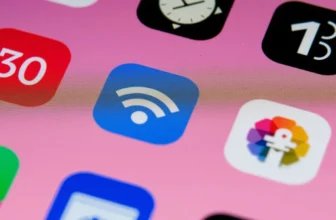
In today’s digital age, smartphones have become an integral part of daily life for children and teenagers. From staying connected with friends and family to accessing educational resources, smartphones offer numerous benefits. However, the internet can also expose children to risks such as inappropriate content, cyberbullying, online predators, and excessive screen time. As a parent, it’s crucial to ensure your child’s smartphone use is safe, secure, and age-appropriate. This guide will walk you through key strategies for protecting your child’s phone and helping them develop healthy habits when using digital devices.
1. Set Up Parental Controls
What are Parental Controls?
Parental controls are settings or software that allow you to monitor and limit the content your child can access on their smartphone. These tools are designed to give you greater control over your child’s phone usage, from restricting access to certain apps or websites to setting time limits on screen time.
Why You Should Use Parental Controls
Parental controls help prevent children from stumbling upon inappropriate content online, whether it’s explicit material, violent games, or social media platforms that are not suitable for their age. They also allow you to monitor your child’s app usage and keep track of their online activity.
How to Set Up Parental Controls:
- iPhone (iOS): Go to Settings > Screen Time > Content & Privacy Restrictions. Here, you can restrict access to apps, content, and purchases.
- Android: Go to Settings > Digital Wellbeing & Parental Controls > Set Up Parental Controls. You can also use Google Family Link to set restrictions and monitor your child’s activity.
2. Monitor App Downloads and Use
Why App Monitoring is Important
Smartphones give children access to countless apps, some of which may not be appropriate for their age. While app stores, such as Google Play and the Apple App Store, often feature age ratings, they don’t always guarantee safety. Some apps might collect personal data, expose children to inappropriate content, or allow contact with strangers.
How to Monitor App Downloads:
- Enable App Approval: On iOS, enable the “Ask to Buy” feature, which requires your approval before any app is downloaded. On Android, set up Google Play parental controls to restrict downloading of apps based on their age rating.
- Review App Usage: Regularly check your child’s device for unfamiliar or potentially harmful apps. Familiarize yourself with the apps your child uses and the features they offer, such as messaging, social networking, or video-sharing.
3. Limit Screen Time
Why Limiting Screen Time is Essential
Excessive screen time can negatively affect children’s mental and physical health, including issues such as poor sleep, eye strain, and social isolation. Research suggests that too much screen time can interfere with important activities like exercise, homework, and face-to-face interactions with family and friends.
How to Limit Screen Time:
- Set Time Limits: Most smartphones have built-in features that allow you to set daily screen time limits for specific apps or the entire device. On iOS, this can be done through Screen Time settings. On Android, use Digital Wellbeing features to limit app usage.
- Create a Screen Time Schedule: Establishing screen time routines can help your child develop healthy habits. For example, no screens during meals or an hour before bedtime to promote relaxation and better sleep.
4. Educate Your Child About Online Safety
Why Online Safety Education is Important
While technical measures like parental controls are essential, educating your child about online safety is equally important. Children should understand the potential risks they may face online and learn how to protect themselves from cyberbullying, online predators, and privacy violations.
Key Safety Topics to Discuss:
- Sharing Personal Information: Teach your child never to share personal information (e.g., full name, address, phone number) online, especially with strangers.
- Cyberbullying: Explain what cyberbullying is and how to report or block anyone who makes them feel uncomfortable online.
- Stranger Danger: Remind your child not to communicate with strangers on social media, messaging apps, or gaming platforms.
- Password Security: Teach your child the importance of using strong, unique passwords for apps and online accounts, and never share passwords with others.
5. Enable Location Tracking and Find My Device Features
Why Location Tracking Can Help
Knowing where your child is can provide peace of mind, especially when they are away from home. Many smartphones have built-in location tracking features that allow you to see their location in real-time.
How to Set Up Location Tracking:
- iPhone (Find My iPhone): Enable the “Find My” feature by going to Settings > [Your Name] > Find My > Find My iPhone. This allows you to locate your child’s device if it’s lost or stolen.
- Android (Find My Device): Turn on “Find My Device” by going to Settings > Security > Find My Device. You can track their phone’s location via the Google Find My Device website or app.
Additionally, some apps and devices, like Life360, provide family tracking features that let you monitor your child’s location and send alerts when they arrive or leave designated places.
6. Set Privacy Settings on Social Media
Why Privacy Settings Matter
Social media platforms often collect vast amounts of personal data. If your child is active on platforms like Instagram, Snapchat, or TikTok, it’s crucial to set privacy settings to limit who can see their posts and interact with them.
How to Set Privacy Settings:
- Instagram: Set their account to private so only approved followers can see their posts. Turn off location sharing and limit who can comment on their photos.
- Snapchat: Set the account to “Friends Only” to ensure that only people they know can send them snaps or messages.
- TikTok: Adjust the privacy settings so that only friends can comment on videos, and consider disabling the ability to share content publicly.
Checkout: Top 5 Apps to Boost Mobile Performance
7. Regularly Review Your Child’s Device
Why Regular Reviews Are Important
Even with parental controls and safety measures in place, it’s essential to regularly review your child’s device. This helps you stay updated on any new apps they’ve installed, any changes in their online behavior, or any potential security concerns.
What to Check:
- App and Web History: Check browsing history and app usage to ensure that your child is not accessing inappropriate content.
- Messages and Social Media Activity: Look through text messages and social media conversations to ensure your child is interacting appropriately online.
- Settings and Permissions: Review the settings and permissions on the device to ensure everything remains secure.
Read More: How to Detect and Remove Spyware
Conclusion
As a parent, protecting your child’s smartphone use involves a combination of setting up technical safeguards and fostering open communication about online safety. By using parental controls, educating your child about digital risks, and regularly monitoring their smartphone activity, you can help ensure that they navigate the online world safely. It’s essential to strike a balance between protection and trust, empowering your child to make responsible decisions while also providing the necessary guidance and tools to stay safe.
By following these steps, you can promote healthy smartphone usage, ensuring that your child benefits from the digital world without falling prey to its potential dangers.
FAQs
Use parental control apps and built-in settings to monitor and limit the apps, content, and screen time on your child’s phone.
Popular parental control apps include Qustodio, Norton Family, and Bark, which allow you to track your child’s activity and set restrictions.
Teach your child to recognize and report bullying, use privacy settings to limit who can contact them, and encourage open communication.
Yes, enabling location tracking features like Find My iPhone or Google’s Find My Device can provide peace of mind and help you locate their device if necessary.
Set their social media accounts to private, monitor their activity, and educate them about the risks of sharing personal information online.






